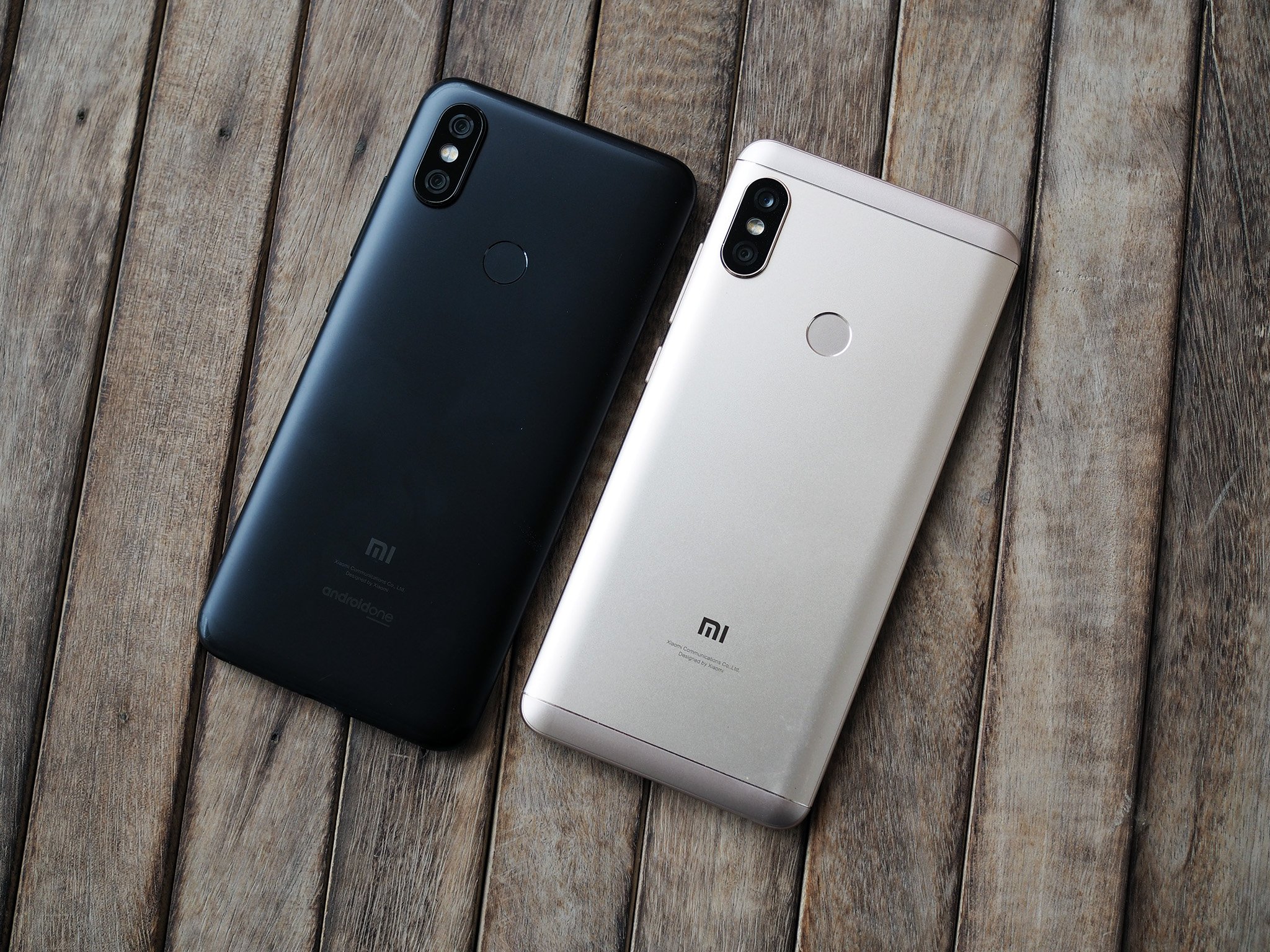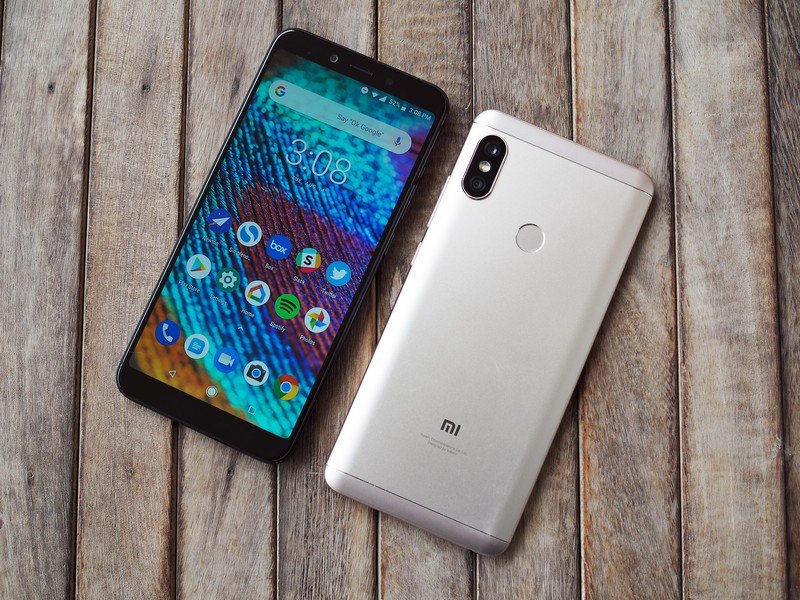Xiaomi Mi A2 vs. Xiaomi Redmi Note 5 Pro: It all comes down to the battery

Xiaomi's Redmi Note series has turned into a juggernaut: over the last two years, phones in this series have defined the budget segment in India. To put things into context, the Redmi Note 5 series managed to rake in sales of over 5 million units in just under four months, and one out of every ten phones sold in India over the last three months was either a Redmi Note 5 or a Note 5 Pro.
Then there's the Mi A2, Xiaomi's 2018 Android One device. The Mi A2 shares a lot of similarities on the hardware front with the Redmi Note 5 Pro — both share a design aesthetic, same display, and a lot of the internal components are also identical.
There's no question that the Redmi Note 5 Pro continues to be one of the best-selling phones in India. Let's see how Xiaomi's other budget phone fares next to it.
Xiaomi Mi A2 vs. Xiaomi Redmi Note 5 Pro: Specs

| Category | Xiaomi Mi A2 | Xiaomi Redmi Note 5 Pro |
|---|---|---|
| Operating System | Android 8.1 Oreo Android One | Android 7.1.2 Nougat MIUI 9.5 |
| Display | 5.99-inch 18:9 FHD+ (2160x1080) IPS LCD panel Gorilla Glass 5 | 5.99-inch 18:9 FHD+ (2160x1080) IPS LCD panel Gorilla Glass |
| SoC | Octa-core Qualcomm Snapdragon 660 4x2.2GHz Kryo 260 + 4x1.8GHz Kryo 260 14nm | Octa-core Qualcomm Snapdragon 636 Eight Kryo 260 cores up to 1.8GHz 14nm |
| GPU | Adreno 512 | Adreno 509 |
| RAM | 4GB/6GB | 4GB/6GB |
| Storage | 32GB/64GB/128GB | 64GB/64GB |
| Expandable | No | Yes, dedicated up to 128GB |
| Rear camera | 12MP (f/1.75, 1.25um) + 20MP (f/1.75, 1.0um) PDAF, LED flash, 4K video recording | 12MP f/2.2 lens + 5MP f/2.0 lens PDAF, LED flash 1080p video recording |
| Front camera | 20MP (f/1.75, 1.0um) AI portrait mode LED Selfie light Beautify 4.0 | 20MP f/2.2 lens LED Selfie light Beautify 4.0 |
| Connectivity | LTE with VoLTE Wi-Fi 802.11 ac, Bluetooth 5.0 GPS, GLONASS | LTE with VoLTE Wi-Fi 802.11 ac, Bluetooth 5.0 GPS, GLONASS Micro-USB, 3.5mm jack, IR blaster |
| Battery | 3000mAh battery Quick Charge 4.0 (India) QC3.0 (ROW) USB-C | 4000mAh battery 5V/2A over Micro-USB |
| Fingerprint | Rear fingerprint | Rear fingerprint |
| Dimensions | 158.7 x 75.4 x 7.3mm | 158.6 × 75.4 × 8.05mm |
| Weight | 166g | 181g |
| Colors | Black, Rose Gold, Gold, Blue | Gold, Rose Gold, Blue, Black |
What the Mi A2 does better

Although both phones share a lot of features, there are key differences that make them stand out. The Mi A2 is aimed at those looking for an uncluttered software experience — as the device is in the Android One initiative, the interface is in line with Google's vision for Android. The device runs Android 8.1 Oreo out of the box, and Xiaomi has committed to delivering the Android Pie update in the coming months.



There's a lot in common on the design front, but the aluminum unibody chassis — with the antenna lines seamlessly merging into the body — gives the Mi A2 a slight edge in this area. The dual camera configuration is also identical across both phones, with the cameras arrayed vertically and the modules protruding from the chassis. This isn't as big an issue on the Redmi Note 5 Pro as it has a thickness of 8mm, but it makes the 7.3mm Mi A2 wobbly when laid out on a flat surface.
It's safe to say the Mi A2 has the best camera in the budget segment. The phone manages to do a much better job in low-light scenarios and has better dynamic range when compared to the Redmi Note 5 Pro in daylight conditions. On the video front, the Mi A2 has 4K video recording, and even though the Snapdragon 636 chipset facilitates 4K video, the Redmi Note 5 Pro doesn't come with that option.
Mi A2 on the left, Redmi Note 5 Pro on the right.
Get the latest news from Android Central, your trusted companion in the world of Android
Elsewhere, the Mi A2 relies on USB-C for charging and comes with Quick Charge 4.0 for the Indian market. The charger included in the box delivers a 5V/2A charge, so you'll have to pick up an aftermarket accessory to unlock the charging potential of the phone.
Xiaomi Mi A2 review: A great sequel with a fantastic camera
What the Redmi Note 5 Pro does better

With a 4000mAh battery under the hood, the Redmi Note 5 Pro is a battery monster. The phone routinely delivers two days' worth of usage from a full charge, with over nine hours of screen-on-time on average. In fact, the only phone that meets the battery longevity of the Redmi Note 5 Pro is ASUS' ZenFone Max Pro M1, and that particular device has an even larger 5000mAh battery.
The Redmi Note 5 Pro also has the basics covered: you get a 3.5mm jack and a MicroSD slot that can accommodate a 128GB SD card. These features are integral in the budget segment, and their omission makes the Mi A2 a less attractive option to potential buyers. The Mi A2 also loses out on dual VoLTE, and as the device isn't running MIUI, you miss out on the localized features that Xiaomi bakes into the ROM.
Which should you buy? Mi A2

If I had to choose between the two, I would recommend the Mi A2 over the Redmi Note 5 Pro in a heartbeat. I'm partial to Android One, and the camera on the Mi A2 is leagues better than what you get on the Redmi Note 5 Pro. But that recommendation isn't for everyone, as the device is missing out on the 3.5mm jack and MicroSD slot, both table stakes features in this segment.
If you absolutely need a phone with a headphone jack and a MicroSD slot, then the Redmi Note 5 Pro is the way to go. It's also the winner if you're looking for a device with two-day battery life — the 4000mAh battery combined with MIUI's battery optimization tweaks make the Redmi Note 5 Pro a battery champion. The Mi A2 lasts a day on a full charge without any issues, but the Redmi Note 5 Pro is a winner in this area by a significant margin.
But if you're in the market for a phone with a great camera, clean software, and the promise of quick updates, then the Mi A2 is a fantastic choice. With just ₹2,000 ($30) separating both phones, it's an easy choice to make.

Harish Jonnalagadda is Android Central's Senior Editor overseeing mobile coverage. In his current role, he leads the site's coverage of Chinese phone brands, networking products, and AV gear. He has been testing phones for over a decade, and has extensive experience in mobile hardware and the global semiconductor industry. Contact him on Twitter at @chunkynerd.


